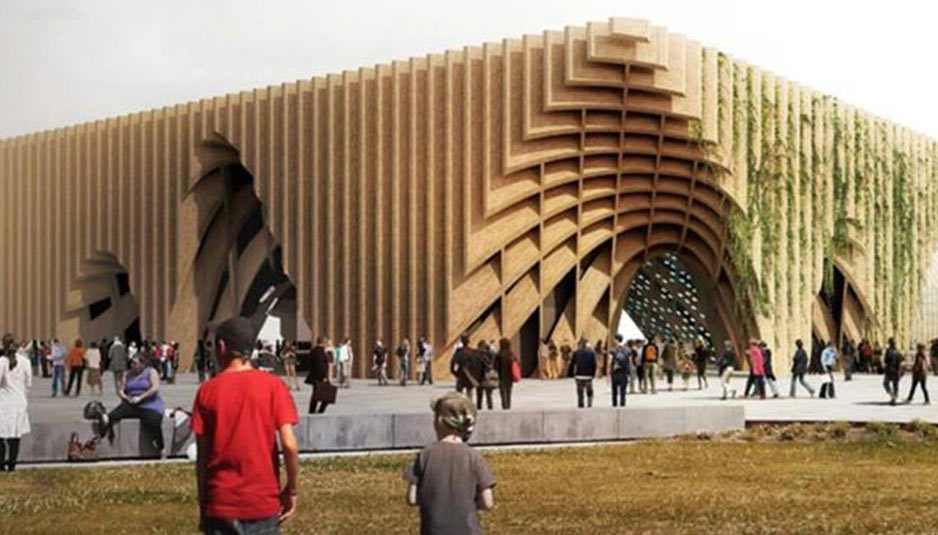Expo Milano 2015: The French Pavilion
Representing an indoor market reversed, using wood and other innovative solutions such as microalgae bio facade: here is the French Pavilion

img.finedininglovers.it
The French Pavilion at Expo Milano 2015 is a great-looking and definitely spectacular. The building is inspired by one of the symbols of French food culture, the indoor market. Given the variety of areas of the country, France offers great gastronomic traditions. And inspired by this multiplicity of products and landscapes to show the public, it was decided to host all this on the ceiling, creating a market upside. The ceiling therefore has large open spaces in which are housed the various pieces of the French territory, and that therefore every visitor can see simply by raising his head. The realization of the structure was occupied CMC – Cooperativa Muratori & Cementisti of Ravenna, along with CMB Carpi and French Simonin. The project is the study of the structure X-TU with the support of the study ALN Atelien Architecture and Studio Adeline Rispal, who oversaw the scenic design of the pavilion.
The project covers 3,592 square meters with a height of 12 meters. The structure has 1,200 cubic meters of laminated wood. The total duration for its realization was of 213 days. The structure is made of fir wood inside and outside of larch. Important Note that emphasizes the quality of the work done for the realization of this structure is represented by joints that are completely invisible. The visual impact is given mainly by the complex geometry of the roof, which has curved shapes that generate a great dynamic effect to the visitor who looks up to admire the cavities of the Pavilion full of riches and variety of French territory. The whole structure is completely dismantled and reassembled, the concept theme of the multiplicity of the pavilions at Expo 2015.
Absolute highlight of this pavilion is the use of facade using the unique properties of microalgae. This facade was invented by the team XTU Architects, and aim to improve the environmental quality of the building. The designers also claim that these facades are able to reduce by 50 percent the consumption related to heating and cooling the building.
